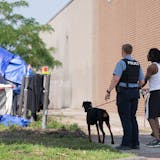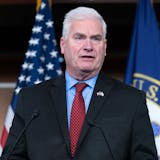From baby formula to laundry detergent to razors, organized crime rings are swiping these household items, reselling them and costing retailers — and consumers — billions. But the St. Paul Police Department is going after the criminals with a newly formed unit focused on catching the crooks and the resellers.
It would be the first organized retail crime unit in Minnesota, police say.
According to the National Retail Federation (NRF), organized retail crime is estimated to cost retailers across the country $30 billion a year. Eight in 10 retailers say that organized retail crime has increased over the last three years, according to the federation's 2013 survey.
Sgt. Charles Anderson, who is heading the department's one-year pilot, and who works in the Western District, first began to see a pattern when he was reviewing shoplifting reports.
"I found that some of the stuff that people were taking just seemed coordinated," Anderson said. "Large volumes of the same types of items, and I didn't really understand it."
The way it works is that relatively expensive items such as laundry detergent and energy drinks are stolen in bulk by "boosters" or professional shoplifters, often chronic offenders, Anderson said.
The products are then sold at "fencing" operations, sometimes online but commonly at local mom-and-pop corner stores. These stores wouldn't normally be able to stock the items especially this inexpensively, Anderson said.
Organized retail crime (ORC) is costly for both retailers and consumers, said Richard Mellor, vice president of loss prevention at NRF. Retailers spend some $12 billion a year combating organized retail theft.

